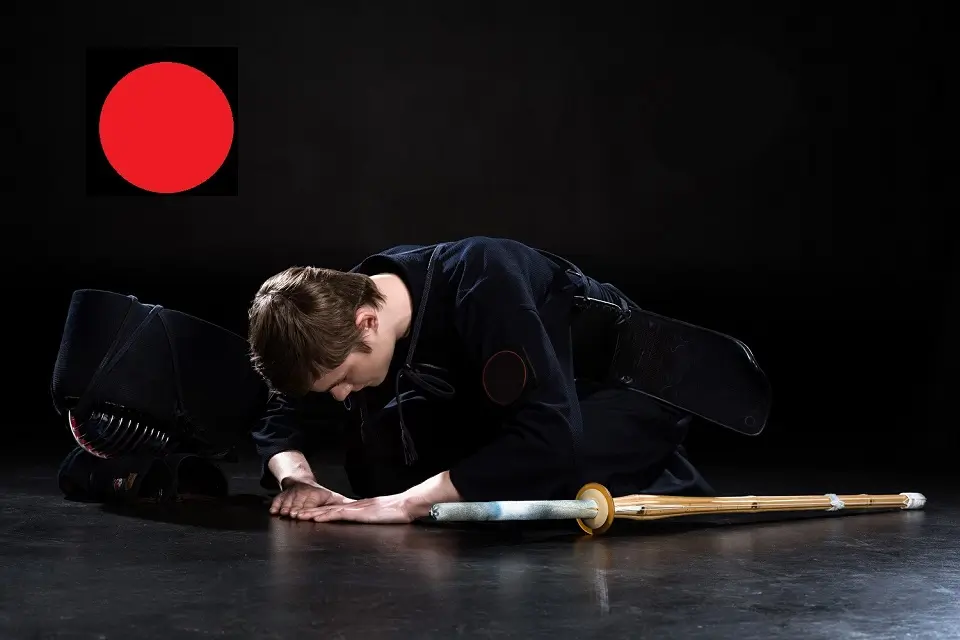Japanese Communication Style: It’s More than Knowing the Language

The Japanese language is very different from most other languages. However, the differences are not merely because of the language; they are more related to the Japanese communication style and etiquette.
Japanese communication is not just about knowing the language but also about knowing and using various communication protocols.
There are various styles and protocols when it comes to Japanese communication. There are unspoken rules, mannerisms, and forms of speaking depending on social status and rank.
People may ask why this is the case since surely you either speak the language or not. And how difficult is it to directly communicate what you want to say or do? Well, it’s not that simple because this is deep-rooted in Japanese culture and traditions based on saving face and being respectful.
There are formal and informal forms of communication when speaking. If you are addressing someone you just met or senior to you at the workplace, then the use of ‘keigo‘ is very important.
Keigo is a formal and Honorific speech that respects superiors, elders, or customers. There are exceptions, but this is a common norm that the Japanese people tend to follow as proper etiquette.
So, what does this actually mean, and why is it important? Let’s examine Japanese communication style and etiquette in depth.

High Context
Like the overall culture, the Japanese communication style is high-context, a term introduced by anthropologist Edward T. Hall. High-context communication relies heavily on implicit information, including shared knowledge, non-verbal cues, and reading between the lines rather than explicit verbal messages.
Reading the air or surroundings (kuki so yomu) is crucial to Japanese communication etiquette. This is similar to “sensing the lay of the land” or “reading between the lines” before taking action or speaking.
You sense what people think or feel to avoid making someone feel uncomfortable or obligated. Kuki o Yomu concept harks back to helping others save their face or “kao wo tateru,” which means not making others lose their face (“mentsu wo ushinau“) by disagreeing with them in public. While communicating, avoiding sounding arrogant or making someone feel inferior is very important.
Being Humble, Credit Sharing and Avoidance of Criticism
The Japanese language is full of honorifics and levels of politeness that reflect social hierarchy and respect for others.
Politeness is one of the most important pillars of Japanese society. If someone gets praise at work or in private for doing something admirable or worthy of praise, you won’t see much gloating and fist-pumping from the one receiving praise.
At work or in general social settings, praise is often welcomed with a humble bow, a “thank you.” A few uttered words follow to downplay the accomplishment.
Often, people say, “iie, iie okage sama desu,” which means “no-no thanks to you.” This is even though others might not have really helped you with your achievements. Being humble and showing humility is very important and very common.
Moreover, when someone makes a mistake, the tendency is not to openly criticize the person in public. However, this happens in extreme cases, especially if juniors make a big mistake.
Ambiguity, Indirectness, and Avoiding Confrontation
Often, Japanese people consider being indirect is polite. It is common to avoid confrontation or disagreement in public.
Japanese people avoid expressing or saying a direct ‘no.’ Instead, they use phrases like’ it’s a bit difficult’ or’ I’ll consider it,’ requiring the listener to interpret the intended meaning.
Yes, it can be frustrating because you wonder whether the answer is ‘yes,’ ‘ maybe,’ or ‘no.’ Often, it is implied and not expressed and can be read through gestures and body language.
Japanese communication is often indirect and subtle. Traditionally, even direct eye contact was considered disrespectful when talking to seniors or older people. However, there have been many positive changes in recent years, and nowadays, eye contact is well accepted.
A very interesting example of this psyche of showing ambiguity without being ambiguous and indirect to avoid confrontation can be seen in a study by Yun Wan of the University of Houston, Victoria, and Makoto Nakayama of DePaul University, USA.
The said study has nothing to do with communication but behavior, which ultimately reflects in the communication style. This is about the cultural differences in giving star ratings.
The above-mentioned comparative study of Japanese, American, and Chinese mentions some interesting facts about the behavior differences. A couple of facts mentioned in the study are as follows:
Even when Japanese customers have an extremely favorable opinion of a restaurant’s service, they often give a 4-star rating rather than the highest 5-star rating.
The above point is an indication of not being very direct and keeping things a bit ambiguous, and the same is reflected in the communication style also.
Another interesting fact of this study is the following sample data about the star ratings:
| Star Rating | Frequency | ||
| China | Japan | U.S.A. | |
| 5 | 47758 | 17160 | 31324 |
| 4 | 23753 | 24349 | 21898 |
| 3 | 10158 | 11748 | 10076 |
| 2 | 2881 | 1756 | 6494 |
| 1 | 4330 | 734 | 6562 |
You will notice that the lowest number of 1-star ratings is from Japanese. This reflects the avoidance of confrontation by not giving a poor rating when dissatisfied, another characteristic of the Japanese communication style. Simultaneously, the highest 3-star rating shows a tendency to keep things ambiguous.
Another fact is that Japanese people don’t use many hand gestures while speaking, as many Westerners do, and the tone is less aggressive. Hand gestures, especially in formal settings, can be considered rude.
Not About Being Straight to the Point
In short, communication in Japan is often not always straight to the point.
As a foreigner, I sometimes repeatedly asked direct questions at the beginning of my journey in Japan, determined to get a swift and definitive answer. I have often failed in my attempts. However, you can interpret this by typically paying attention to the following indicators.
- If someone utters a “hmmm” while slightly looking down, this generally means ‘maybe‘ and indicates that they might be considering it.
- If this is followed with a “shhh..” teeth-sucking sound, this usually implies difficulty.
- If both of these actions are followed by the hand, grab behind the neck while uttering a big “yeah,” then this could be read as definitely no!
So, next time you ask a question, either in a meeting or in a normal private situation, look for these telltale signs if you are unsure.
Non-verbal Communication Style
Non-verbal style in Japanese communication finds its roots in the above two points.
In high-context cultures like Japan, non-verbal communication carries substantial weight. Much communication happens indirectly through physical cues, expressions, and body language.
Bowing, or “ojigi,” is fundamental to Japanese society. It’s a Japanese greeting that expresses respect, gratitude, or apology.
The depth and duration of the bow can vary based on the relationship between the people involved and the situation. For instance, a deeper, longer bow typically indicates greater respect or a deeper apology.
Facial expressions, eye contact, and other body language are also crucial. For instance, prolonged eye contact might be considered rude or aggressive. Averting one’s gaze, especially when talking to superiors, is a sign of respect.
Posture, too, is significant. Standing or sitting upright denotes attentiveness and respect for others present. Conversely, people consider a slouched posture a sign of disrespect or lack of interest.
These non-verbal cues, combined with the indirect and high-context nature of Japanese verbal communication, mean that understanding and interpreting unspoken messages is vital in Japanese society.
Importance of Silence in Japanese Communication
In many Western cultures, continuous dialogue is seen as engagement, while silence may be perceived as a sign of disinterest or awkwardness. However, in Japanese culture, silence plays a significant and nuanced role. It is an essential part of effective communication and a testament to one’s listening skills.
Silence often carries various meanings. It may be a sign of respect, indicating that the listener is paying close attention to the speaker’s words. It may denote agreement, where the listener’s silence signifies their understanding and acceptance of the point.
On the other hand, silence can also represent contemplation. When presented with a new idea or proposal, a Japanese person might take a period of silence to consider it carefully before responding. This is viewed as a thoughtful approach to decision-making and discussions.
Lastly, silence is also employed to maintain harmony and avoid conflict. If a discussion could lead to confrontation or discord, Japanese people might choose silence over the potentially contentious conversation.
Challenging but Doable
Understanding the Japanese communication style can be challenging for foreigners in the beginning. However, one can take clues from common Japanese phrases, highlighting basic etiquette while communicating.
It takes an open and willing mind and the ability to accept and learn cultural factors that may be 180 degrees different from what we might have been practicing. However, you will often see ex-pats in Japan who follow Japanese communication etiquette with as much grace as the Japanese do.
Conclusion
When all is said and done, understanding the Japanese communication style brings you closer to understanding the Japanese people’s culture.
Language and communication style are among society’s most important foundation stones that can help us integrate with society, and this point is more important in Japan than in many other countries.
Integrating with the people around you is important not only for personal reasons but also for professional lives and growth because Japanese culture and traditions heavily influence Japanese work culture.
While less wordy and less direct, you will appreciate the way of thinking reflected in the Japanese communication style, which always shows respect and sensitivity to the feelings of others. It also maintains balance and avoids confrontation.
Japanese communication etiquettes reflect ideals and culture and have pros and cons. That said, they are a very important aspect of daily life. The more familiar you get with the style and the reasons behind why it is so, the easier it is to adapt.
However, it’s not just about understanding the Japanese communication style; it’s about adapting those etiquettes in daily communication. Adapting will need a lot of practice, but it’s not just worth it; it’s a must if you look forward to having a stress-free life in Japan with personal and professional success. After all, communication is key in any culture, bringing you one step closer to interacting in Japanese society.

A long-term ex-pat in Japan, Himanshu comes with an IT background in SAP consulting, IT Business Development, and then running the country operations of an IT consulting multinational. Himanshu is the co-founder and Managing Director of ReachExt K.K. and EJable.com. He is also an Advisory Board Member of a Silicon Valley AI/IoT startup.
